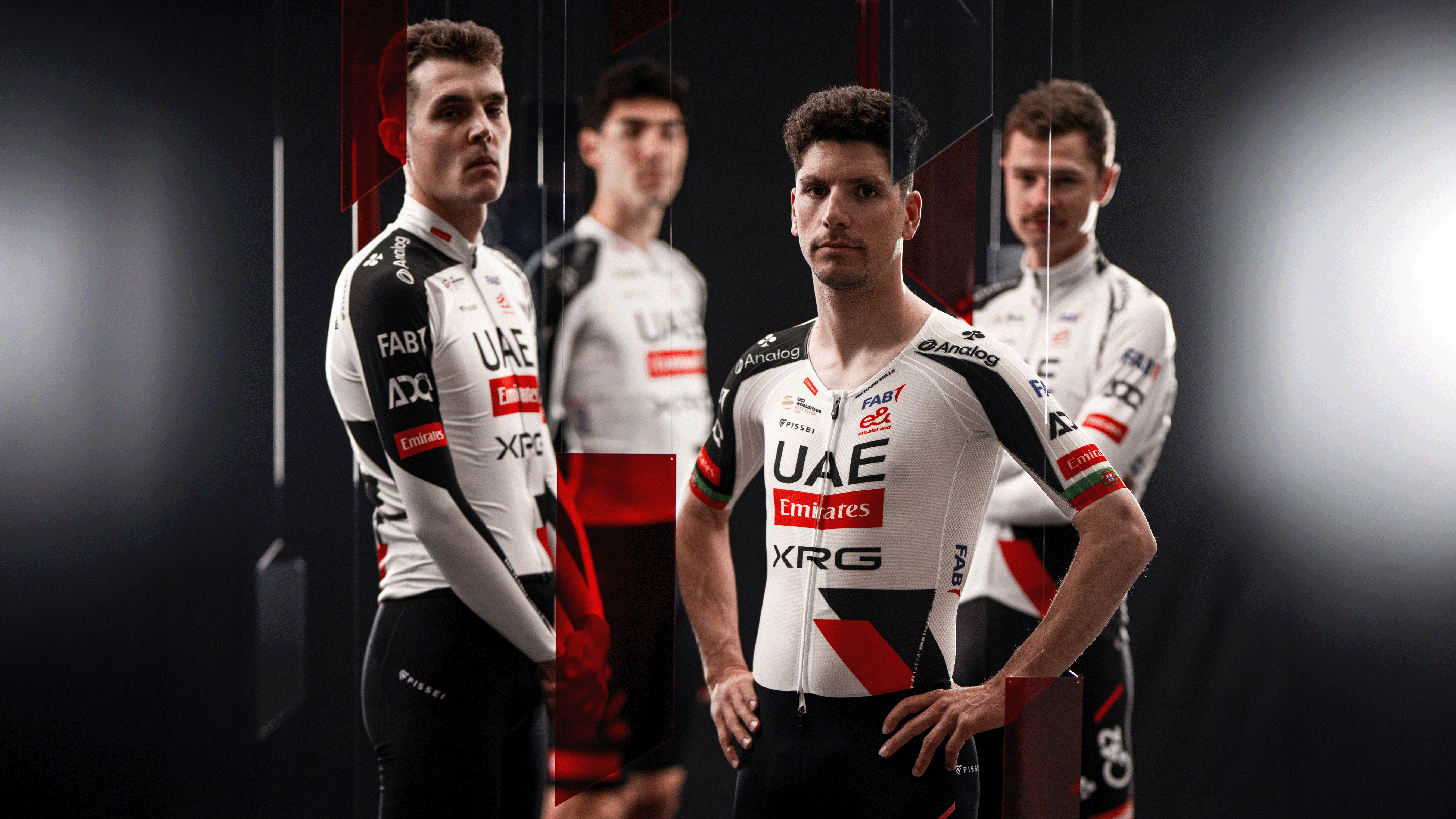Confusion in Colorado
Officials neutralized race at the bottom of Kebler Pass descent
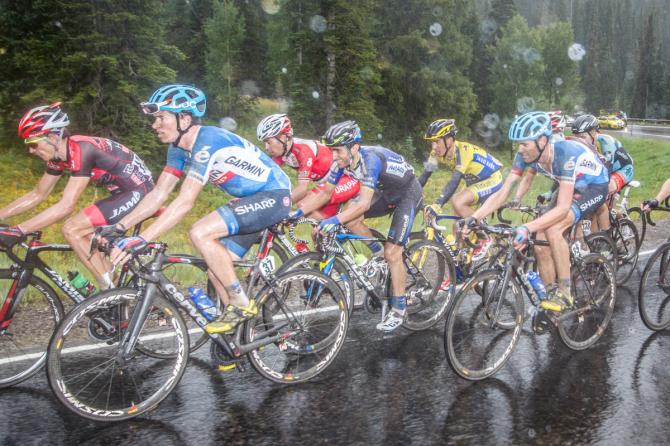
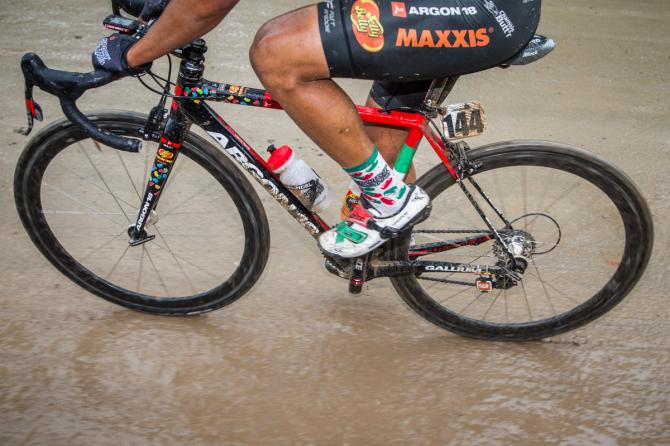
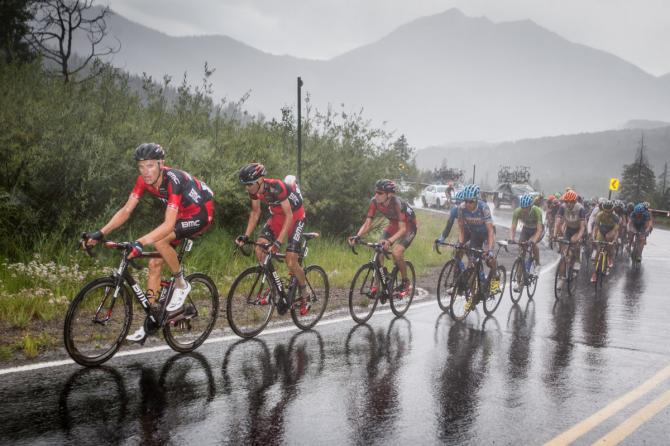
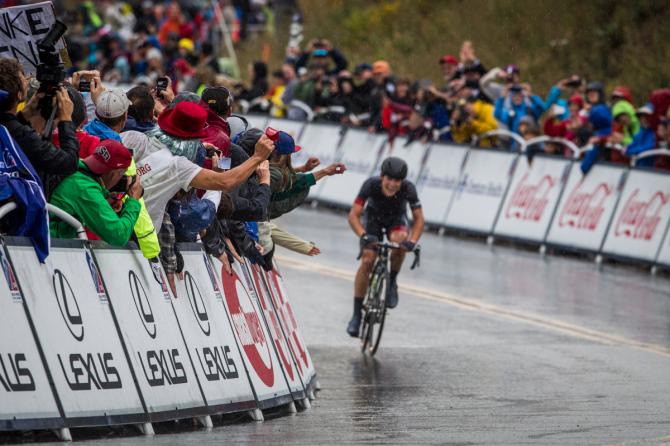
Confusion reigned and literally rained during the second stage of the USA Pro Challenge on Tuesday when the skies opened up and drenched the gravel descent off the penultimate climb of the day on Kebler Pass.
Officials neutralized the race at the bottom of the descent, holding up the solo leader and eventual stage winner Robin Carpenter (Hincapie Sportswear), while a select lead chase group was stopped in the same spot and then restarted after Carpenter was sent down the road with his 45-second lead intact. The decision allowed multiple riders to rejoin the peloton, including race leader Kiel Reijnen.
"With about 8km to go the race had gotten back to the pavement, and at the time there was apparently lightning and hail storms on the descent," said race director Jim Birrell. "At that time the decision was made to neutralize the race on behalf of the riders' safety."
Riders were held up for several minutes before they were sent down the road, and many vocally disagreed with the officials' decision after they finished on Mt. Crested Butte. Lacking the ability to communicate with riders, organizers sent the neutral Mavic support ahead to try and slow things down, a decision that caused visible consternation among both riders and team directors.
"The race officials actually requested that Mavic try to pass the lead group on the descent," said Optum Pro Cycling director Jonas Carney. "On a muddy raining descent as they were racing full speed, [officials] asked the Mavic moto to pass the group to notify the riders that they were neutral. Of course the Mavic moto couldn't get there. So the guys raced all the way to the end of the dirt, and then they obviously stopped the race. Worst officiating call I've seen in nine years of directing."
Garmin-Sharp's Alex Howes, who finished second on the stage behind Carpenter and took over the race lead, agreed that the neutralization was not handled well.
"The neutralization needed to happen on the top of the climb, not halfway down the descent," Howes said. "It was dangerous to stop the race at that point. We had already gotten through the messy stuff. When I say that, I mean we clearly could not see anything, and to have people standing in the middle of the road with flags was maybe not the safest way to go about it. Thankfully nobody got hurt."
The latest race content, interviews, features, reviews and expert buying guides, direct to your inbox!
Carpenter said he knew nothing of the neutralization until a Mavic mechanic flagged him down at the bottom of the descent.
"I think I heard something from a moto driver toward the top of the climb, saying something about the descent," the stage winner said. "But I couldn't really understand him. I rolled all the way down the dirt section and then saw someone come out of a Mavic car waving his arms. I slammed on my brakes as much as I could in the wet. I couldn't really understand what was happening, because we'd already passed over the dirt section. I would have expected a neutralization toward the top, or someone just telling me to slow down maybe."
Some of the directors also questioned whether the neutralization should have happened at all.
"Absolutely not," Carney said when Cyclingnews asked if officials made the right decision. "There was not one single crash until after the neutral when they allowed 20 more riders to rejoin the lead group. Then after they restarted it, then there was a crash."
Team SmartStop directors Mike Creed and Gord Fraser also questioned the decision to stop the race because of the conditions.
"They said they neutralized it for safety, then you saw as soon as it bunched up on the descent, Frank Schleck crashed," Creed said. "It's counter-intuitive, but sometimes it's safer when it's single file. I don't know how I feel about it. You either call it or you don't. I'll say this: I'm sure it's really hard to be an official, and it's hard to make these calls."
Fraser was more direct about what he thought of the decision.
"My opinion, right now from the information I have and what I saw, I don't think it should have been neutralized," he said. "But that's a hard decision. I wouldn't want to be in the commissaire's position on that one."
Not all the directors believed the officials made the wrong call. UnitedHeathcare's Mike Tamayo agreed with the decision.
"The officials felt it was unsafe going down the descent," Tamayo said. "They neutralized it coming down to be safe. Is it the right call, the wrong call? Who knows. My opinion is it was the right call because it was unsafe for the riders at that point. It's bike racing."
Birrell also supported the decision by Chief Commissaire Dot Abbott to bring things to a halt, at least temporarily.
"As the weather deteriorated, so did our communications," he said. "So the effort was made to inform the entire peloton that we were neutralizing the race. But as the weather deteriorated so did the ability to communicate that message. So not everybody got to hear the message of neutralization."
UnitedHealthcare's Danny Summerhill, wearing the jersey for most aggressive rider from his breakaway efforts on stage 1, was one of the riders who didn't get the message.
"I don't know if we neutralized it," Summerhill told Cyclingnews after the stage. "They couldn't have because we went down the descent full blast. That was not neutral. So I don't think that was."
But there was definitely a neutralization. First Carpenter was stopped, and then the group chasing him was brought to a halt. Riders also questioned the wisdom of making them stop when they were soaking wet and temperatures had plummeted.
"My first thought was actually, 'I need a jacket, like ASAP, otherwise I'm just going to fall over from hypothermia,'" Carpenter said.
Howes added a more colorful description of the scene.
"We stopped the race and we all stood there for a good five to seven minutes," Howes said. "We were already pretty cold, and when you're pretty cold and you stop pedaling and you stand there for awhile, you get real cold. It wasn't a pleasant site to look around and see starved bike racers in spandex shaking their buns off."
Growing up in Missoula, Montana, Pat competed in his first bike race in 1985 at Flathead Lake. He studied English and journalism at the University of Oregon and has covered North American cycling extensively since 2009, as well as racing and teams in Europe and South America. Pat currently lives in the US outside of Portland, Oregon, with his imaginary dog Rusty.
